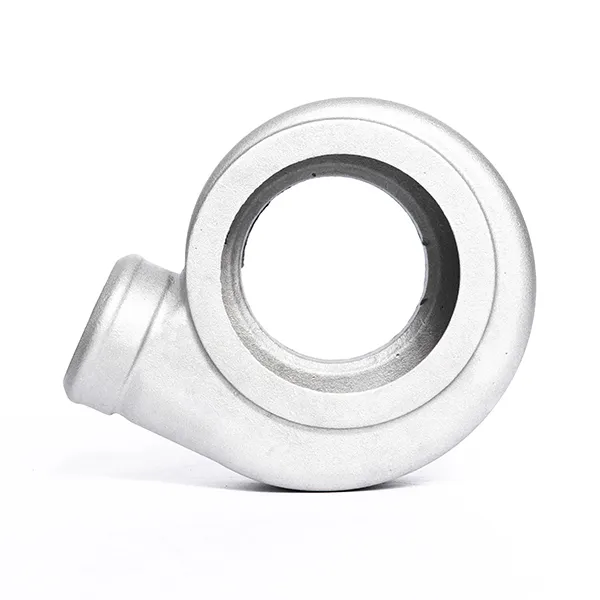Mobile:+86-311-808-126-83
Email:info@ydcastings.com
die casting factory
The World of Die Casting Innovations and Inspections in a Modern Factory Setting
Die casting has emerged as a vital manufacturing process that enables industries to create complex metal components with remarkable precision and efficiency. This method is particularly favored in sectors such as automotive, aerospace, electronics, and consumer goods, where the demand for high-quality components continues to grow. Understanding the operations of a die casting factory involves exploring the technological innovations, quality inspection processes, and sustainable practices that are making waves in today's manufacturing landscape.
Understanding Die Casting
Die casting is a metal casting process characterized by forcing molten metal under high pressure into a mold cavity. Once cooled and solidified, the metal piece, known as a casting, is ejected from the die. This process allows for intricate designs with tight tolerances and excellent surface finishes. Common materials used in die casting include aluminum, zinc, magnesium, and copper alloys, each chosen for their specific properties suited to various applications.
The process typically involves several steps mold design and fabrication, metal melting, die casting, and finishing operations. The effectiveness of a die casting factory hinges on its ability to integrate advanced technology at each of these stages.
Innovations Enhancing Efficiency
In recent years, die casting factories have adopted several innovations aimed at enhancing operational efficiency and product quality. One significant advancement is the introduction of computer-aided design (CAD) software, which allows for the detailed modeling of parts before production begins. This digital design process helps identify potential issues with the molds and optimizes the design for manufacturability.
Additionally, automation plays a crucial role in modern die casting factories. Automated systems can handle repetitive tasks such as loading materials, operating machinery, and performing inspections, significantly reducing the chances of human error. Robotics in die casting not only improve efficiency but also ensure a consistent quality of the products being manufactured.
Some factories are integrating smart manufacturing and the Internet of Things (IoT) into their processes. By utilizing sensors and connected devices, manufacturers can monitor machine performance in real-time, forecast maintenance needs, and reduce downtime. This predictive maintenance approach is crucial in a high-volume production environment, where even minor disruptions can lead to significant financial losses.
die casting factory

Quality Control and Inspection
Quality control is a cornerstone of any reputable die casting factory. The precision required in die casting demands rigorous inspection processes to ensure that the final products meet the required specifications. Common quality control measures include visual inspections, dimensional checks, and non-destructive testing methods, such as ultrasonic or X-ray inspections, to identify internal defects.
One innovative approach gaining popularity is the use of machine learning algorithms to analyze production data. By analyzing patterns in data collected during the casting process, factories can identify anomalies that may indicate potential defects. This proactive approach allows manufacturers to make adjustments in real-time, thus enhancing product quality and minimizing scrap rates.
Furthermore, certifications such as ISO 9001 play a critical role in affirming a factory's commitment to quality management. Adhering to these standards assures clients that the manufacturing processes in place uphold rigorous quality controls, thus instilling confidence in the end products.
Sustainable Practices
As the global emphasis on sustainability continues to grow, die casting factories are also exploring environmentally friendly practices. From using recycled materials to implementing energy-efficient technologies, these factories strive to reduce their carbon footprint. For instance, some operations utilize closed-loop systems that recycle heat generated during the metal melting process, significantly lowering energy consumption.
Additionally, advancements in die design and production techniques have led to reduced material waste. Efficient molding processes allow manufacturers to use only the necessary amount of metal, resulting in less scrap and more sustainable practices overall.
Conclusion
The die casting industry is undergoing a transformative phase driven by technological advances and a commitment to quality and sustainability. Factories equipped with cutting-edge machinery, automated systems, and intelligent monitoring solutions are setting new standards in manufacturing efficiency. As the demand for high-quality components continues to rise, the die casting factory stands as a testament to innovation, precision, and sustainable growth in the manufacturing sector. In a rapidly changing industry, the successful adoption of these practices will determine the leaders of tomorrow's die casting market.
-
Automobile Water Pumps in Vehicle PerformanceNewsMay.21,2025
-
Valve Box Cover Cast Iron: The Backbone of Fluid Control SystemsNewsMay.21,2025
-
Pump Impeller in Fluid DynamicsNewsMay.21,2025
-
Baffled Oil Pans in Racing Cars: How They Improve PerformanceNewsMay.21,2025
-
Compressor Housing Turbo in Pump EngineeringNewsMay.21,2025
-
Why Oil Pan Thickness Matters for Engine SafetyNewsMay.21,2025











